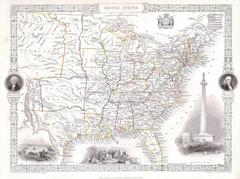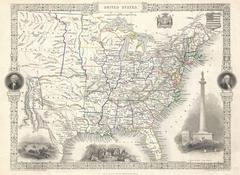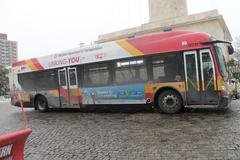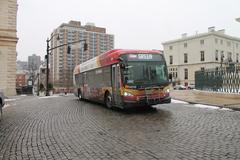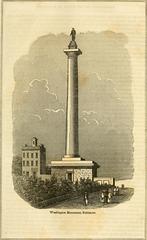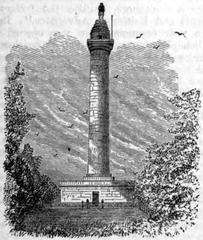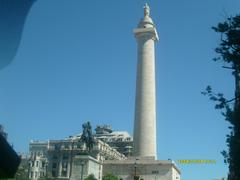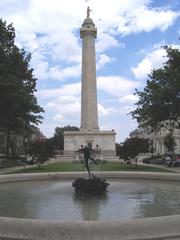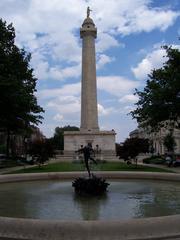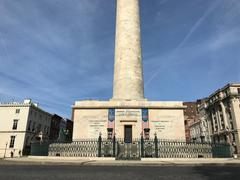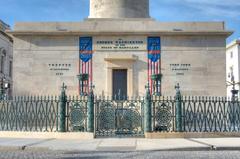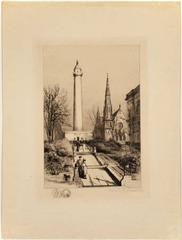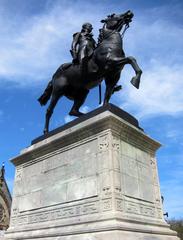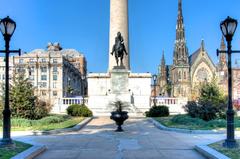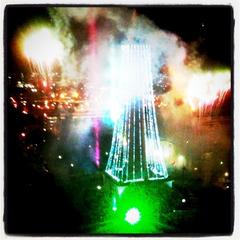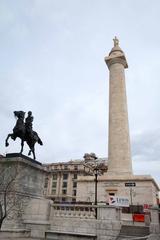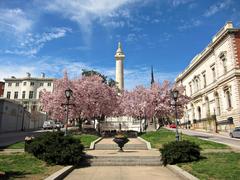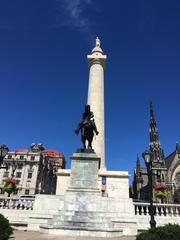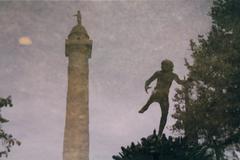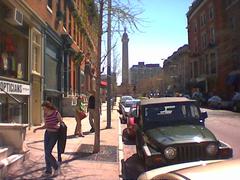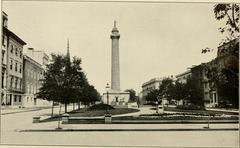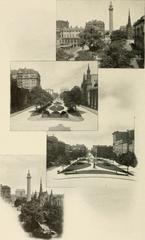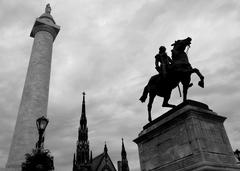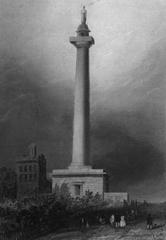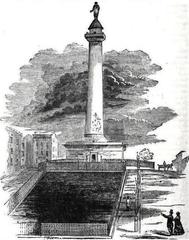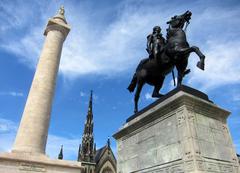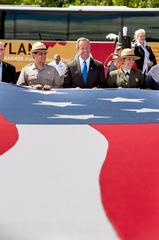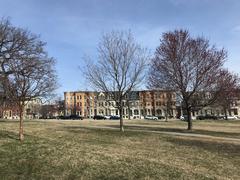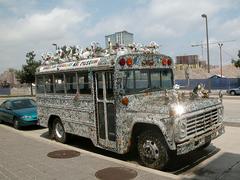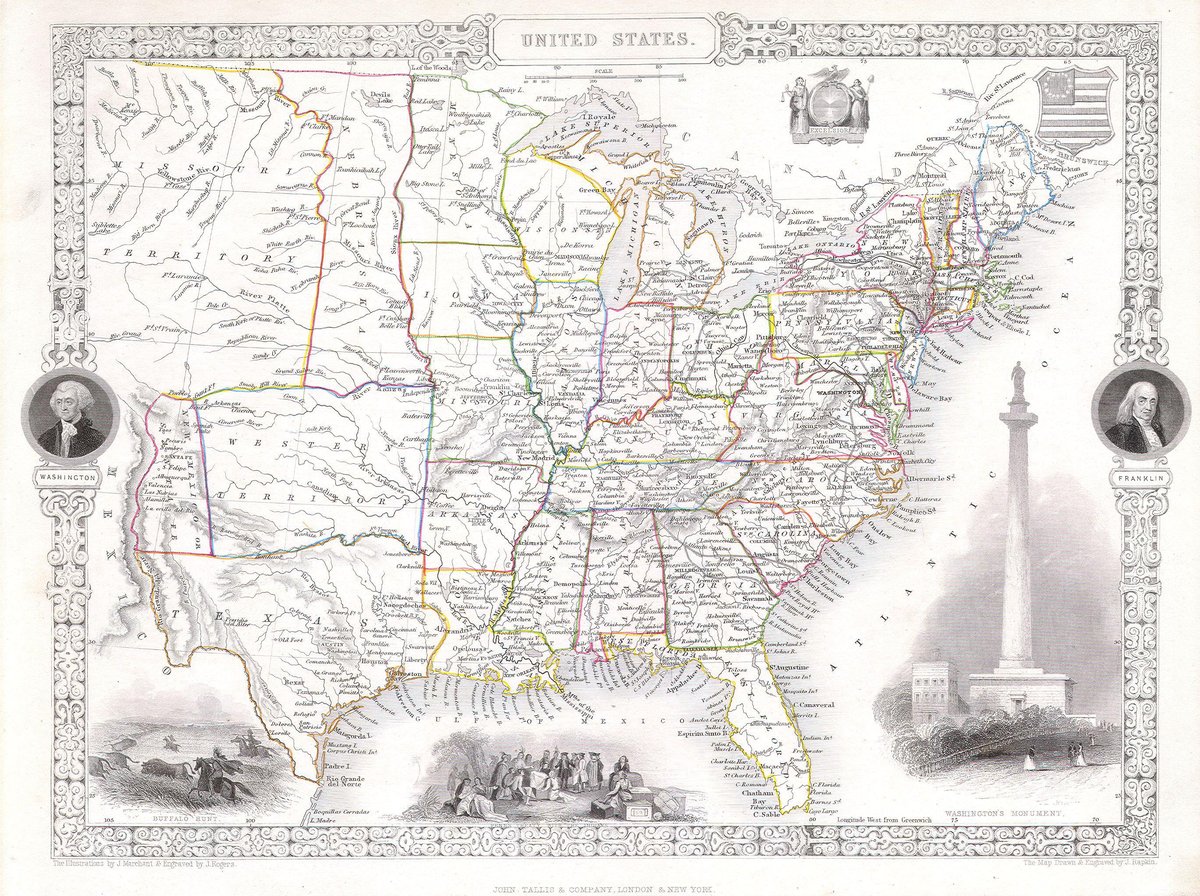
Visiting the Washington Monument in Baltimore: Hours, Tickets, and Historical Insights
Published Date: 24/07/2024
Introduction to the Washington Monument
The Washington Monument in Baltimore, Maryland, is a landmark of immense historical, architectural, and cultural significance. As the first major monument dedicated to George Washington, the first President of the United States, it serves as a testament to his legacy and the city’s rich history. Designed by the American architect Robert Mills in 1815, the monument was completed in 1829, predating the more famous Washington Monument in Washington, D.C. (Baltimore Heritage). Built on land donated by Colonel John Eager Howard, the monument quickly became a focal point for the Mount Vernon neighborhood, attracting tourists, wealthy residents, and cultural institutions (Wikipedia). Standing at 178 feet and 8 inches tall, the structure was an engineering marvel of its time, constructed using local white marble from Cockeysville, Maryland (Explore Baltimore Heritage). The monument’s architecture, inspired by Roman design, has influenced other significant structures in the United States, including the Washington Monument in Washington, D.C. (Baltimore.org). Today, the Washington Monument remains a central feature of Baltimore’s Mount Vernon Place, an urban park with four radiating squares. It continues to stand as a symbol of local pride and historical significance, hosting several annual events and celebrations that draw thousands of visitors each year (Maryland Recommendations).
Contents Overview
Visiting the Washington Monument in Baltimore - History, Tickets, and More
History of the Washington Monument in Baltimore
Early Planning and Design
The Washington Monument in Baltimore, Maryland, holds the distinction of being the first major monument dedicated to George Washington, the first President of the United States. The monument was designed by the American architect Robert Mills in 1815, who later designed the more famous Washington Monument in Washington, D.C. (Baltimore Heritage). The land for the monument was donated by Colonel John Eager Howard from his extensive ‘Belvidere’ estate just north of Baltimore Town (Wikipedia).
Construction and Completion
Construction of the monument began in 1815 and was completed in 1829. The structure stands at 178 feet and 8 inches tall and consists of a large square base, a grandiose Doric column, and a statue of George Washington. The statue, standing at an imposing fourteen feet, depicts Washington as the Commander in Chief of the Continental Army (Maryland Recommendations). The monument was constructed using local materials, most notably white marble from Cockeysville, Maryland (Explore Baltimore Heritage).
Architectural Significance
At the time of its completion, the Washington Monument was the tallest columnar structure in the world. The monument’s design was inspired by Roman architecture, and it was an engineering marvel of its day, erected without modern construction equipment. The structure’s height initially caused concern among residents, who feared it might topple over onto their houses (Baltimore.org).
Cultural and Historical Impact
The Washington Monument quickly became a focal point for the Mount Vernon neighborhood, attracting tourists, wealthy residents, and cultural institutions. Its prominence led President John Quincy Adams to dub Baltimore ‘The Monumental City’ during a visit in 1827 (NGA). The monument has weathered nearly 200 years of history, celebrations, and events, and continues to stand as a symbol of local pride and historical significance (Baltimore.org).
Restoration and Preservation
Over the years, the Washington Monument has undergone several restorations to preserve its structural integrity and historical significance. The interior of the monument was stuccoed in the 1830s, and wooden doors were installed, painted to resemble Roman bronze doors (Maryland Recommendations). The monument is managed by the non-profit Mount Vernon Place Conservancy, which oversees its maintenance and preservation (NGA).
Modern-Day Significance
Today, the Washington Monument remains a central feature of Baltimore’s Mount Vernon Place, an urban park with four radiating squares. The monument’s ground-floor gallery offers digital exhibits about its construction, the history of the Mount Vernon neighborhood, and the life and accomplishments of George Washington (Wikipedia). Visitors can climb the 227 steps to the top of the monument for a panoramic view of the city (Baltimore.org).
Annual Events and Celebrations
The Washington Monument is also the centerpiece of several annual events and celebrations. One of the most notable is the Annual Monument Lighting Festival, held on the first Thursday of each December. The event features live music, food, and fireworks, and has been a beloved tradition for over half a century (Maryland Recommendations). The monument is illuminated in stunning colors, celebrating its role as an essential part of the Mount Vernon community.
Visitor Information
The Washington Monument is open to the public year-round, from Wednesday to Sunday, except for Thanksgiving and Christmas Day. Visiting hours are from 10 am to 5 pm, and admission to the gallery and digital exhibits is free. Tickets to climb the tower can be purchased online or onsite, costing $6 for adults and $4 for children (Baltimore.org). The monument is also open on Wednesday evenings during the summer for evening events in the park squares.
Fun Facts
- The Washington Monument in Baltimore was initially designed to be more elaborate, but financial constraints and safety concerns led to a simplified structure (Maryland Recommendations).
- The monument’s bronze portraits of Washington’s life and the cast-iron fence around the base were added much later (Maryland Recommendations).
- The monument’s interior features a grand spiral staircase with 227 steps, providing natural light and ventilation through narrow windows (Maryland Recommendations).
Nearby Attractions
The Washington Monument is conveniently located in a vibrant hub in Baltimore, making it easy to fit into any itinerary. Nearby attractions include the Walters Art Museum, the George Peabody Library, and the Maryland Center for History and Culture. These destinations offer an unforgettable day of immersing oneself in the vibrant culture of Baltimore (Maryland Recommendations).
FAQ
What are the visiting hours for the Washington Monument in Baltimore?
The monument is open from Wednesday to Sunday, 10 am to 5 pm, except for Thanksgiving and Christmas Day.
How much are tickets to climb the Washington Monument in Baltimore?
Tickets cost $6 for adults and $4 for children and can be purchased online or onsite.
Is the Washington Monument in Baltimore accessible?
While the gallery is accessible, the climb to the top may not be suitable for those with mobility issues due to the 227 steps.
Final Thoughts
The Washington Monument in Baltimore is often overshadowed by its grand counterpart in the nation’s capital. However, it remains a profoundly important landmark in a city that treasures its history. Whether you’re interested in its architectural significance, historical impact, or simply want to enjoy the panoramic views from the top, the Washington Monument in Baltimore is a must-visit destination (Maryland Recommendations).
Call to Action
For more information about visiting the Washington Monument and other historical sites in Baltimore, download the Audiala mobile app, check out our other related posts, or follow us on social media for updates and travel tips.
Summary and Final Thoughts
The Washington Monument in Baltimore is a multifaceted landmark that holds historical, architectural, cultural, social, and economic significance. Its completion in 1829 marked it as the first major monument dedicated to George Washington, a fact that has cemented its place in American history. Over the years, the monument has undergone several restorations, including a significant $5.5 million restoration completed in 2015, ensuring its preservation for future generations (The Monumentous). The monument’s influence extends beyond its physical presence, becoming an integral part of Baltimore’s identity and a symbol of democratic principles and peaceful governance. It continues to serve as a public gathering place for traditional festivals and annual events, such as the Monument Lighting Festival, which attracts hundreds of thousands each year (Go Downtown Baltimore). Whether you’re interested in its architectural significance, historical impact, or simply want to enjoy the panoramic views from the top, the Washington Monument in Baltimore is a must-visit destination. By following the provided visitor tips and exploring nearby attractions like the Walters Art Museum and the George Peabody Library, you can make the most of your visit to this iconic landmark. For more information and updates, download the Audiala mobile app, check out related posts, or follow us on social media (Recreation.gov).
Sources and Further Reading
- Baltimore Heritage. (n.d.). https://explore.baltimoreheritage.org/items/show/3
- Wikipedia. (n.d.). Washington Monument (Baltimore). Retrieved from https://en.wikipedia.org/wiki/Washington_Monument_(Baltimore)
- Maryland Recommendations. (n.d.). Washington Monument. Retrieved from https://www.marylandrecommendations.com/travel-tourism/washington-monument/
- The Monumentous. (n.d.). Baltimore’s Washington Monument. Retrieved from https://themonumentous.com/baltimores-washington-monument-mount-vernon-place/
- Recreation.gov. (n.d.). Washington Monument Tickets. Retrieved from https://www.recreation.gov/ticket/234635/ticket/193
- Baltimore.org. (n.d.). The Story Behind Baltimore’s Washington Monument. Retrieved from https://baltimore.org/what-to-do/the-story-behind-baltimores-washington-monument/
- Go Downtown Baltimore. (n.d.). Monument Lighting. Retrieved from https://godowntownbaltimore.com/monument-lighting-2/
- Lonely Planet. (n.d.). Washington Monument, Baltimore. Retrieved from https://www.lonelyplanet.com/usa/maryland/baltimore/attractions/washington-monument/a/poi-sig/411154/361982
- National Park Service. (n.d.). Washington Monument Baltimore Visiting Hours and Seasons. Retrieved from https://www.nps.gov/wamo/planyourvisit/hours.htm
